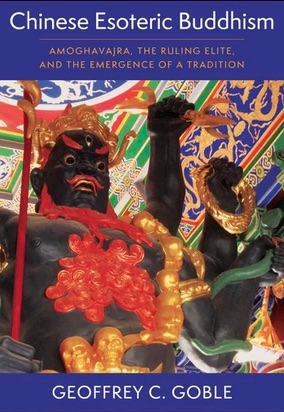Chinese Esoteric Buddhism is generally held to have been established as a distinct and institutionalized Buddhist school in eighth-century China by “the Three Great Masters of Kaiyuan”: Śubhākarasiṃha, Vajrabodhi, and Amoghavajra. Geoffrey C. Goble provides an innovative account of the tradition’s emergence that sheds new light on the structures and traditions that shaped its institutionalization.
Goble focuses on Amoghavajra (704–774), contending that he was the central figure in Esoteric Buddhism’s rapid rise in Tang dynasty China, and the other two “patriarchs” are known primarily through Amoghavajra’s teachings and writings. He presents the scriptural, mythological, and practical aspects of Chinese Esoteric Buddhism in the eighth century and places them in the historical contexts within which Amoghavajra operated. By telling the story of Amoghavajra’s rise to prominence and of Esoteric Buddhism’s corresponding institutionalization in China, Goble makes the case that the evolution of this tradition was predicated on Indic scriptures and practical norms rather than being the product of conscious adaptation to a Chinese cultural environment. He demonstrates that Esoteric Buddhism was employed by Chinese rulers to defeat military and political rivals. Based on close readings of a broad range of textual sources previously untapped by English-language scholarship, this book overturns many assumptions about the origins of Chinese Esoteric Buddhism.
- Table of Contents
- Acknowledgments
- List of Conventions and Abbreviations
- Introduction
- 1. The Three Great Masters of Kaiyuan and the Teaching of the Five Divisions
- 2. Esoteric Buddhism in Context: Tang Imperial Religion
- 3. Esoteric Buddhism in Context: The An Lushan Rebellions and Tang War Religion
- 4. Amoghavajra and the Ruling Elite
- 5. The Institutional Establishment of Esoteric Buddhism
- 6. The Consolidation of Amoghavajra’s Legacy
- Notes
- Bibliography
- Index

